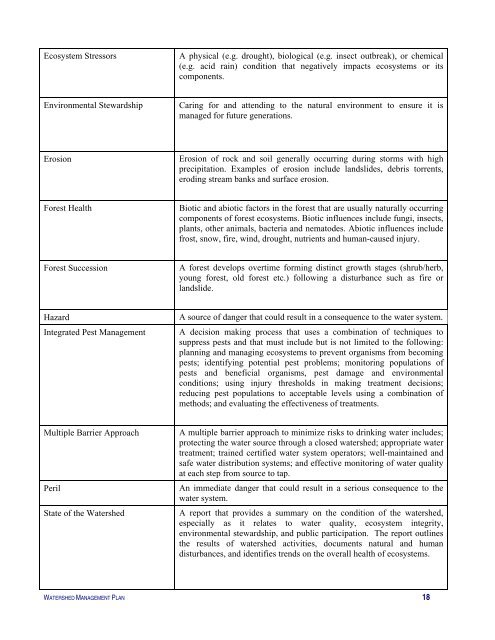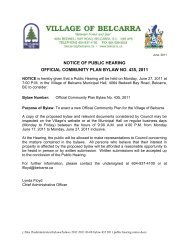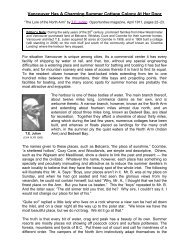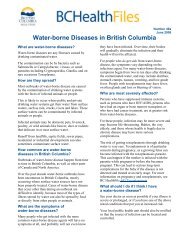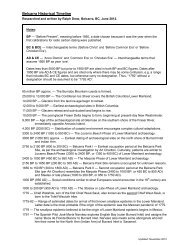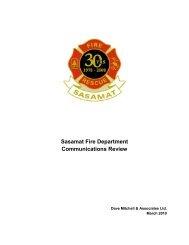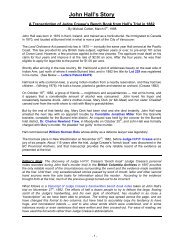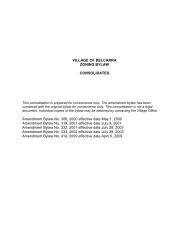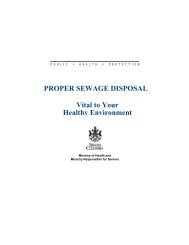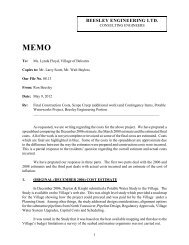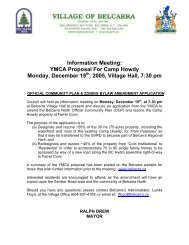Metro Vancouver's Watershed Management Plan
Metro Vancouver's Watershed Management Plan
Metro Vancouver's Watershed Management Plan
You also want an ePaper? Increase the reach of your titles
YUMPU automatically turns print PDFs into web optimized ePapers that Google loves.
Ecosystem Stressors<br />
A physical (e.g. drought), biological (e.g. insect outbreak), or chemical<br />
(e.g. acid rain) condition that negatively impacts ecosystems or its<br />
components.<br />
Environmental Stewardship<br />
Caring for and attending to the natural environment to ensure it is<br />
managed for future generations.<br />
Erosion<br />
Erosion of rock and soil generally occurring during storms with high<br />
precipitation. Examples of erosion include landslides, debris torrents,<br />
eroding stream banks and surface erosion.<br />
Forest Health<br />
Biotic and abiotic factors in the forest that are usually naturally occurring<br />
components of forest ecosystems. Biotic influences include fungi, insects,<br />
plants, other animals, bacteria and nematodes. Abiotic influences include<br />
frost, snow, fire, wind, drought, nutrients and human-caused injury.<br />
Forest Succession<br />
A forest develops overtime forming distinct growth stages (shrub/herb,<br />
young forest, old forest etc.) following a disturbance such as fire or<br />
landslide.<br />
Hazard<br />
Integrated Pest <strong>Management</strong><br />
A source of danger that could result in a consequence to the water system.<br />
A decision making process that uses a combination of techniques to<br />
suppress pests and that must include but is not limited to the following:<br />
planning and managing ecosystems to prevent organisms from becoming<br />
pests; identifying potential pest problems; monitoring populations of<br />
pests and beneficial organisms, pest damage and environmental<br />
conditions; using injury thresholds in making treatment decisions;<br />
reducing pest populations to acceptable levels using a combination of<br />
methods; and evaluating the effectiveness of treatments.<br />
Multiple Barrier Approach<br />
Peril<br />
State of the <strong>Watershed</strong><br />
A multiple barrier approach to minimize risks to drinking water includes;<br />
protecting the water source through a closed watershed; appropriate water<br />
treatment; trained certified water system operators; well-maintained and<br />
safe water distribution systems; and effective monitoring of water quality<br />
at each step from source to tap.<br />
An immediate danger that could result in a serious consequence to the<br />
water system.<br />
A report that provides a summary on the condition of the watershed,<br />
especially as it relates to water quality, ecosystem integrity,<br />
environmental stewardship, and public participation. The report outlines<br />
the results of watershed activities, documents natural and human<br />
disturbances, and identifies trends on the overall health of ecosystems.<br />
WATERSHED MANAGEMENT PLAN 18


